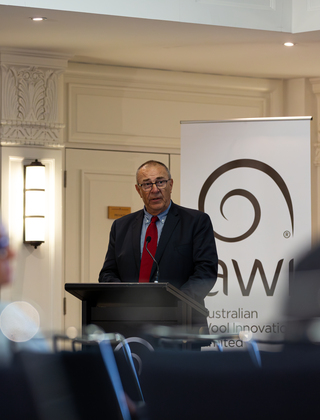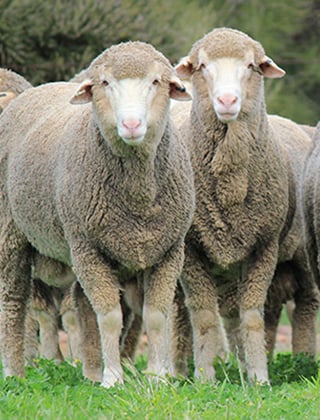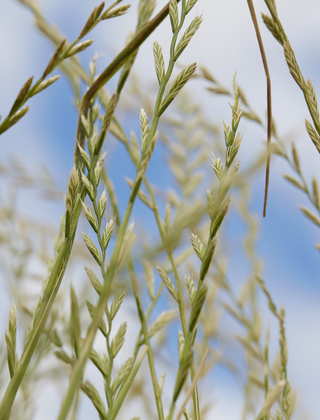Australian Wool Production Forecast Report April 2017
The Australian Wool Production Forecasting Committee forecasts that Australian shorn wool production in 2016/17 will reach 339 mkg greasy. This 4.3% increase from 2015/16 is largely the result of excellent seasonal conditions in many areas resulting in higher fleece weights. The strong wool market conditions also appear to be encouraging producers to retain sheep so sheep shorn levels are also expected to be higher. The Committee’s first forecast for 2017/18 is for shorn wool production to be 340 mkg greasy, up by 0.4%, due to a combination of slightly higher wool cuts per head and sheep shorn numbers. This assumes normal seasonal conditions.
- The Australian Wool Production Forecasting Committee forecasts that Australian shorn wool production in 2016/17 will reach 339 mkg greasy. This 4.3% increase from 2015/16 is largely the result of excellent seasonal conditions in many areas resulting in higher fleece weights. The strong wool market conditions also appear to be encouraging producers to retain sheep so sheep shorn levels are also expected to be higher.
- The Committee’s first forecast for 2017/18 is for shorn wool production to be 340 mkg greasy, up by 0.4%, due to a combination of slightly higher wool cuts per head and sheep shorn numbers. This assumes normal seasonal conditions.
The Australian Wool Production Forecasting Committee (AWPFC) has revised its forecast of shorn wool production for the 2016/17 season to 339 million kilograms greasy, a 4.3% increase on the 2015/16 season and slightly higher than forecast at its December meeting.
Committee Chairman, Russell Pattinson said that “as the Committee expected in December, the excellent seasonal conditions in virtually all of the major sheep producing areas of mainland Australia have resulted in higher average wool cuts per head this season. Some states such as Western Australia, South Australia and Queensland have seen the benefit from the improved seasonal conditions throughout the 2016/17 season and fleece weights are even better than the Committee previously expected. For other states, notably Victoria, the improved seasonal conditions came later and average wool cuts per head have only increased at shearings from late Spring onwards.
“These excellent seasonal conditions combined with the high wool prices in the past few months have also encouraged producers to retain older sheep to help rebuild their flocks and for shearing.”
The 4.3% forecast increase in shorn wool production compares with a 4.7% increase in the weight of wool tested by AWTA in the first nine months of 2016/17 and a 6.4% increase in the first hand offerings of wool at auction recorded by AWEX. The Committee believes that some wool, particularly ultrafine wool, has been released from the stocks held on-farm and also from stocks held in broker’s stores in response to the high prices.
The AWPFC’s first forecast of shorn wool production for the coming 2017/18 season is for production to be 340 mkg greasy. This is a 0.4% increase on the 2016/17 forecast reflecting small increases in the number of sheep shorn and similar average wool cuts per head. It assumes normal seasonal conditions through Autumn and into 2017/18.
The Committee noted that for the 2016/17 season to March, AWTA test data showed a significant increase in the weight of wool tested between 20 micron and 24 microns and declines in the volumes of 17 micron and 18 micron wool. This probably mainly reflects the excellent seasonal conditions. There has also been a significant fall in the volume of 26 to 30 micron wool. The mean fibre diameter for Australia to March was 21.0 microns, the same as in 2015/16.
| Table 1: Summary of wool production estimates and forecasts for Australia | |||||
|---|---|---|---|---|---|
| Parameter | 2015/16 Final Estimate |
2016/17 Fourth Forecast |
Change y-o-y (%) | 2017/18 First Forecast |
Change y-o-y (%) |
| Sheep numbers shorn (million head) |
73.4 | 73.7 | +0.5% | 73.9 | +0.2% |
| Average cut per head (kg/head) |
4.43 | 4.59 | +3.8% | 4.60 | +0.2% |
| Shorn wool production (mkg greasy) |
325 | 339 | +4.3% | 340 | +0.4% |
| Note: Totals may not add due to rounding |
| Table 2: Total shorn wool production by State - 2015/16 and 2016/17 | |||||||
|---|---|---|---|---|---|---|---|
| mkg greasy | NSW | VIC | WA | SA | TAS | QLD | National |
| 2015/16 Final Estimate (mkg) | 122.9 | 66.1 | 65.2 | 54.8 | 9.1 | 6.9 | 325 |
| 2016/17 Fourth Forecast (mkg) | 124.7 | 66.7 | 71.1 | 58.7 | 9.1 | 8.5 | 339 |
| Change y-o-y % | +1.5% | +1.0% | +9.1% | +7.2% | 0.0% | +23.0% | +4.3% |
| Note: Totals may not add due to rounding |
Note: Totals may not add due to rounding
The National Committee drew on advice from the six State Committees, each of which includes growers, brokers, private treaty merchants, representatives from State Departments of Agriculture, and the Australian Wool Testing Authority. Data and input was also drawn from AWEX, wool exporters, the Australian Bureau of Statistics, ABARES, AWTA and Meat and Livestock Australia.
















